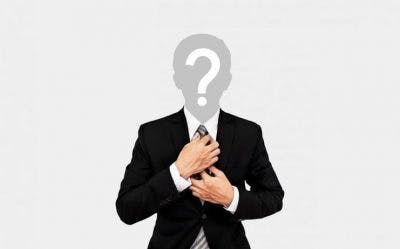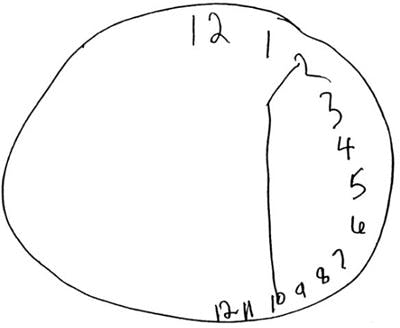After right side stroke, it’s important to understand the unique secondary effects that may occur. Every stroke is different, and therefore a stroke on the right side of the brain causes different effects in different individuals. These side effects can impact many aspects of daily life and involve motor, sensory, and cognitive functions.
There are many patterns among right hemisphere stroke survivors that are worth understanding. Although everyone will experience the effects of right side stroke differently, it can be helpful to educate yourself about these potential effects so you can work with your therapy team to effectively address them.
To help you better understand what to expect following right side stroke, we will discuss how right side stroke occurs as well as diagnosis and immediate treatment after detection of stroke symptoms. Additionally, this article will review common effects of right side stroke and rehabilitation techniques to maximize recovery.
Use the links below to jump straight to any section:
Understanding Right Side Stroke
A stroke occurs when the brain’s blood supply is interrupted and prevents an area from receiving enough oxygen-rich blood. Both hemispheres (sides) of the brain can be affected by stroke, so right side stroke refers to a stroke in the right hemisphere. When brain cells do not have sufficient oxygen, they begin to die, resulting in areas of tissue damage and loss of function.
There are two main types of stroke: ischemic stroke, where a blood clot obstructs an artery in the brain, and hemorrhagic stroke, where a blood vessel in the brain bursts. Stroke is a leading cause of long-term disability in the United States, with around 87% of strokes being ischemic strokes. Additionally, stroke risk is increased by factors such as high blood pressure or cholesterol, obesity, and smoking.
The best way to identify a stroke is to recognize the early warning signs: facial drooping, loss of sensation or weakness on half of the body, and slurred speech. Sometimes a piercing headache is involved, too. Taking time to review these stroke warning signs can help protect you or a loved one from receiving delayed treatment after stroke onset.
A stroke is a medical emergency and immediate medicate treatment is crucial to restore the normal flow of blood or stop the bleeding that is causing brain tissue death. Upon arriving to the hospital for treatment, imaging such as CT or MRI is performed to determine the location and mechanism of the stroke. Doctors will then work to restore blood flow to the brain to stop tissue damage.
Clot-busting drugs such as tPA (tissue plasminogen activator) can be used to help resolve a clot in the case of some ischemic strokes. If drugs cannot be used to immediately address the stroke, surgery may be necessary, especially for hemorrhagic strokes.
After treatment and medical stabilization, the road to recovery begins. Patients must work hard and commit to a dedicated rehabilitation plan to overcome the effects of right side stroke.
Secondary Effects of Right Side Stroke
The brain is divided into two hemispheres, designated as the left hemisphere and the right hemisphere. Each hemisphere of the brain controls the opposite side of the body. Therefore, a stroke on the right side of the brain largely results in impairments on the left side of the body as well as the loss of other functions controlled by the right hemisphere.
In addition to motor skills, the right side of the brain is responsible for other functions including memory, visuospatial abilities, attention, emotion, and creative skills. This is because the right hemisphere contains half of the motor cortex, somatosensory cortex, visual cortex, and frontal lobe. Consequently, right side stroke may result in the following stroke side effects:
Left Side Hemiparesis: Weakness on the Left Side of the Body
Hemiparesis is a condition that causes weakness on the affected side of the body. Because each hemisphere of the brain controls the opposite side of the body, a right side stroke may result in left side hemiparesis, or difficulty moving the left side. This can cause survivors to struggle with moving their left leg, arm, or hand, resulting in functional deficits and decreased efficiency with daily tasks.
Left Side Hemiplegia: Paralysis on the Left Side of the Body
The size of a stroke is often correlated to the severity of the resulting impairments. For instance, a massive stroke in the right hemisphere might lead to paralysis on the left side of the body, a condition referred to as left hemiplegia. This can result in an inability to walk due to paralysis in the left leg, for example, or it can create difficulty with the activities of daily living due to paralysis in the left arm. Hemiplegia is also likely to impact a survivor’s independence.
Prosopagnosia: Difficulty Recognizing Faces

After a right hemisphere stroke, some patients may have difficulty recognizing faces – a condition known as prosopagnosia. Many researchers propose that the inability to recognize faces is linked to damage to the fusiform face area of the fusiform gyrus, particularly in the right hemisphere of the brain. Damage in this region may cause right side stroke survivors to have difficulty recognizing family members’ faces, which can be distressing to loved ones.
Left Neglect: Unaware of Environment on Left Side

Image from Journal of Neurology
When stroke occurs in the right parietal lobe, some patients may lose awareness of the left side of their environment. For example, they may not eat the food on the left side of their plate because they are not aware that it’s there. They may also frequently bump into things on their left side or seem to “ignore” someone interacting with them on the left.
This is a condition called hemineglect in which stroke survivors have problems observing and attending to the objects in the environment on their left side. Since they also have decreased awareness of the left side of their body, survivors experiencing hemineglect (left neglect), will often lean considerably to their right when standing or sitting and perform tasks using only their right limbs.
To illustrate hemineglect, see the image above from the Journal of Neurology where a patient with right side stroke was instructed to fill in the numbers on a clock. You will notice that all the numbers have been crammed into the right side because the patient is affected by left neglect and is unaware of the left half of the picture.
Homonymous Hemianopia: Visual Changes to Each Eye

The visual cortex spans both side of the brain, so vision problems can occur after a stroke affecting either hemisphere. In fact, around 1/3 of stroke survivors are impacted by vision loss to some extent.
In patients with homonymous hemianopia, for example, one half of the opposite field of vision will be affected. When the right visual cortex is damaged following right side stroke, it can cause blindness on the left side of each eye’s visual field. This is a common vision deficit that occurs after stroke, although there can be others. If not addressed, vision deficits can increase risk of injury or other complications such as dizziness after stroke.
Anosognosia: Neglect or Denial of Disability
Unfortunately, some right side stroke survivors are in denial of their physical disabilities because the stroke has impacted their self-awareness. A condition called anosognosia occurs when a person with a disability is unaware of its existence.
Anosognosia results from damage to the parietal lobe or temporoparietal area in the right hemisphere of the brain. This condition may prevent right side stroke survivors from seeking treatment because they are in denial that disability exists to begin with, slowing or complicating recovery. It is important for caregivers and family to remember that this is not intentional denial, but rather a result of tissue damage to a specific area of the brain.
Pseudobulbar Affect: Sudden Outbursts of Emotion
Some stroke survivors may find themselves experiencing uncontrollable outbursts of emotion following right hemisphere stroke. This can include outbursts like laughter or crying that are often unrelated to their immediate situation. This condition is called pseudobulbar affect or emotional lability.
Patients with pseudobulbar affect may laugh disproportionately at something that isn’t nearly as funny, for example, or they may laugh inappropriately at a story that is sad. These reactions are not intentional, but rather a side effect of brain damage following right side stroke.
This condition occurs in about half of stroke survivors and should not be confused with other psychiatric disorders like post-stroke depression. Additionally, other behavior and personality changes such as impulsivity are common after right side stroke, particularly when the frontal lobe is involved.
Cognitive Changes: Difficulty with Processing and Memory
Right side stroke can result in a wide variety of changes in cognition, memory, and attention. For example, a survivor may have difficulty staying on task, following logical steps to complete a task, or remembering activities or skills that were formerly familiar to them.
Survivors may also present with poorer cognitive processing when they become fatigued or be easily overwhelmed with once-simple tasks. Additionally, right hemisphere stroke can result in decreased processing of rhythm and musical patterns. Cognitive effects can improve with time and practice, but these changes can be challenging for both the survivor and their caregivers following right hemisphere stroke.
Although right side stroke can result in many side effects and functional deficits, there is hope for recovery through intensive rehabilitation. To help you better understand what stroke recovery may look like, we will review different available therapies and treatment options.
Rehabilitation Methods for Right Side Stroke Survivors
Rehabilitation and treatment of right side stroke involves restoring as much function as possible. This occurs through neuroplasticity, which refers to the brain’s ability to heal and rewire neural connections. Massed practice of therapy exercises and rehab skills is necessary for this rewiring, which requires both dedication and consistency.
The side effects listed above can be remedied, at least partially, by participation in the following rehabilitation methods and stroke recovery treatments:
- Physical Therapy. Dedicated practice of physical therapy stroke exercises can help improve range of motion, strength, and functional mobility after right side stroke. Physical therapists can also help you regain the ability to walk or avoid other complications, such as contractures. Even if survivors lack active muscle contraction on their affected side, they can perform passive exercise by using their right limbs to assist the left through exercises.
- Speech and Cognitive Therapy. A speech-language pathologist can be a great asset during recovery from right side stroke to improve strength and function of facial muscles. In addition to speech and swallowing, SLPs are trained to help you recover cognitive function, like object recognition, which can help with conditions like prosopagnosia. In fact, two SLPs came together to create the CT Speech and Cognitive Therapy App to provide speech and cognitive therapy conveniently from your phone or tablet.
- Occupational Therapy. Following a stroke, many activities of daily living (ADLs) are impacted and survivors may experience a loss of independence. Occupational therapists specialize in helping to regain these skills and improve independence with ADLs like bathing, dressing, and cooking. Additionally, they can help survivors recover arm and hand function as well as recommend helpful adaptive equipment to improve safety and function at home.
- Psychotherapy. Some side effects of right hemisphere stroke affect a patient’s personality. For example, if anosognosia is involved, the patient is in denial that there’s a problem to begin with. One possible solution is a form of talk therapy called motivational enhancement therapy. Ideally, this can help improve self-reflection and reduce the patient’s resistance to treatment. A therapist can also help identify and minimize unwanted behaviors, teach coping skills, and address post-stroke depression.
- Attention Training. When hemineglect is present after right hemisphere stroke, patients can be instructed to turn the head to the left side to bring awareness and attention to their environment. Although this is a compensation technique, it helps train the brain to improve attention to the left side.
- Vision Training. Vision problems after right side stroke should be treated with the help of a team of specialists. Sometimes corrective eyewear from an optometrist can help. Other times participating in vision training may help restore vision after stroke. Vision is essential for driving and carrying out other daily tasks, so it’s important to seek professional help.
- Positive Psychology. Another approach to personality and emotional changes after right hemisphere stroke is positive psychology. This technique focuses on enhancing positive emotions by rewiring the brain for happiness. The book Healing & Happiness After Stroke is a great resource for this.
It’s important for survivors to work closely with a team of therapists to address effects of right hemisphere stroke. Not only can your therapist help directly treat any issues you are experiencing, but they can also provide guidance as you develop your own regimen to follow at home. Additionally, interactive rehabilitation devices can make rehab more motivating and help you maximize your repetitions of therapy exercises.
Right Hemisphere Stroke Recovery
The right side of the brain is involved in many functions, meaning right side stroke can result in numerous secondary effects. This can include hemiparesis or hemiplegia, cognitive changes, vision deficits, and left neglect. Although each individual is unique, there are common patterns in the deficits survivors experience following right side stroke.
The rehabilitation journey after right side stroke takes time and the duration of recovery varies between patients. Fortunately, your brain is capable of incredible things. When you put in the work during rehabilitation, the brain works hard to rewire itself through neuroplasticity. Recovery is always possible if you commit to a dedicated rehab plan and put this into practice every day.
The post Right Hemisphere Stroke: Side Effects, Treatment, & Recovery appeared first on Flint Rehab.



